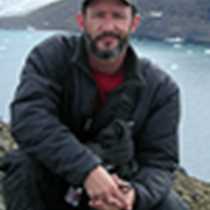Glacier Bay
Patterns in nature are ever present and ever changing. On our visit to Glacier Bay National Park we experienced many of the grandest patterns that the earth has to offer. The scale of the bay is enormous. It encompasses over 3 million acres and is part of one of the largest protected wilderness areas anywhere on earth. Patterns were everywhere as we woke up as far north as you can go in Southeast Alaska; 59 ° 03’ at the face of Margerie Glacier. The textures of the bedrock and ice were amazing. As we proceeded south with a view of the John Hopkins Glacier we could see the rock patterns within the ice as the glacier has carved its way out of the tallest coastal mountain range in the world. Our last tidewater glacier of the trip, Lamplugh, also had details that were unbelievable including its own self contained river pouring from the glacial face.
The patterns of rock left behind by the ice and reworked by water looked organized to the point of being artificial, it shows that Mother Nature can tidy up her cooking surfaces. Unfortunately for this geologist the incredible rock and ice patterns do give way to the ever encroaching forest and its stripes of green. The grasses, bushes, and trees follow and cover where the ice has retreated. The bay is a living laboratory for botanical succession and surficial geology’s disappearance.
The day created many memories of patterns both small and large.
Patterns in nature are ever present and ever changing. On our visit to Glacier Bay National Park we experienced many of the grandest patterns that the earth has to offer. The scale of the bay is enormous. It encompasses over 3 million acres and is part of one of the largest protected wilderness areas anywhere on earth. Patterns were everywhere as we woke up as far north as you can go in Southeast Alaska; 59 ° 03’ at the face of Margerie Glacier. The textures of the bedrock and ice were amazing. As we proceeded south with a view of the John Hopkins Glacier we could see the rock patterns within the ice as the glacier has carved its way out of the tallest coastal mountain range in the world. Our last tidewater glacier of the trip, Lamplugh, also had details that were unbelievable including its own self contained river pouring from the glacial face.
The patterns of rock left behind by the ice and reworked by water looked organized to the point of being artificial, it shows that Mother Nature can tidy up her cooking surfaces. Unfortunately for this geologist the incredible rock and ice patterns do give way to the ever encroaching forest and its stripes of green. The grasses, bushes, and trees follow and cover where the ice has retreated. The bay is a living laboratory for botanical succession and surficial geology’s disappearance.
The day created many memories of patterns both small and large.




